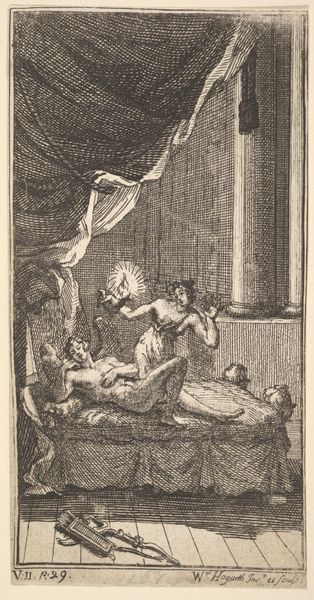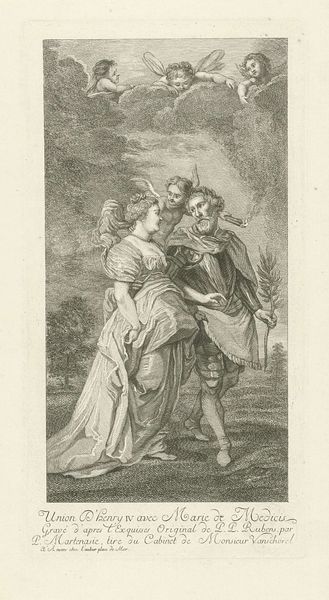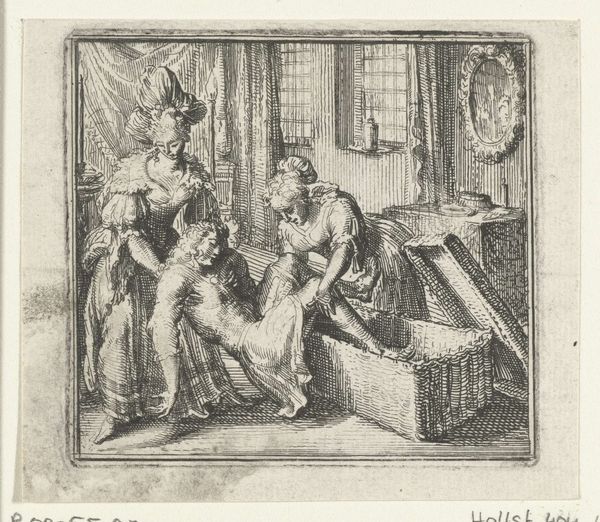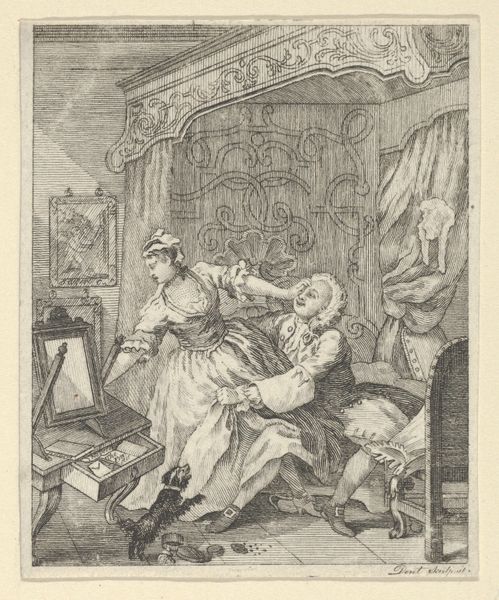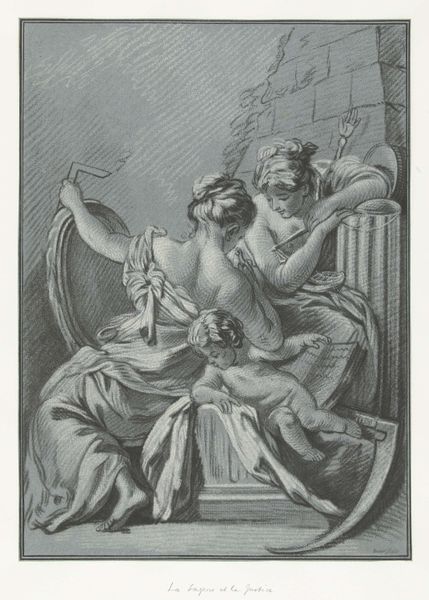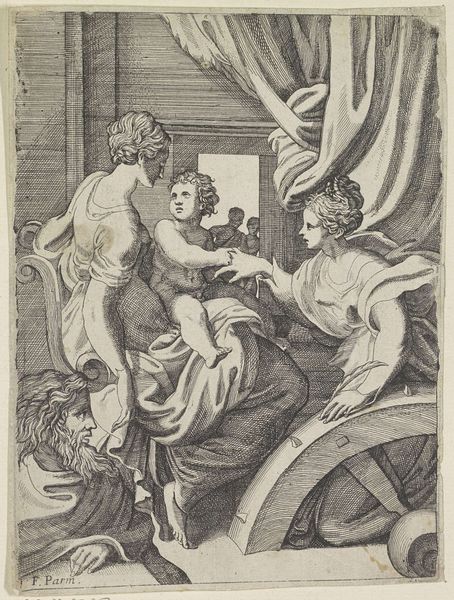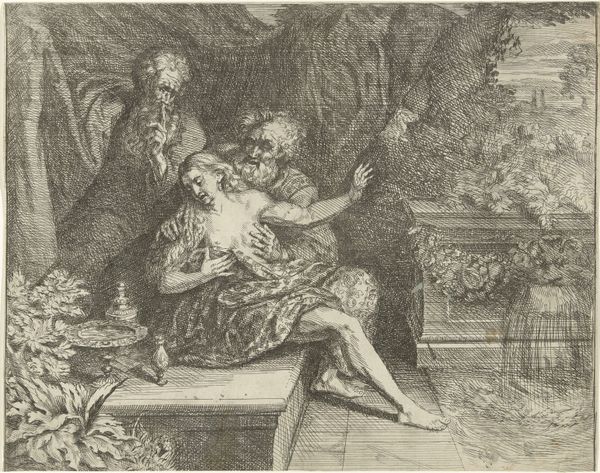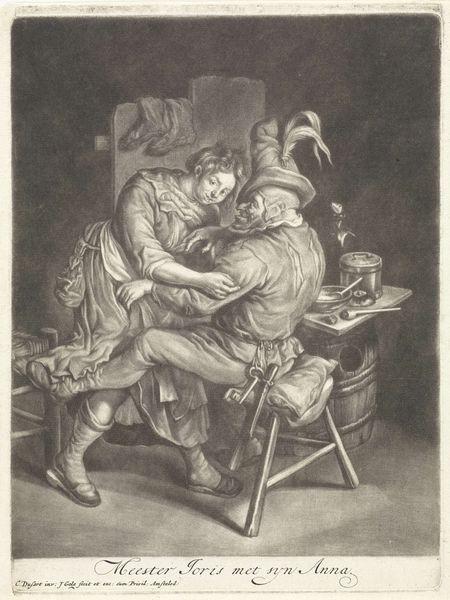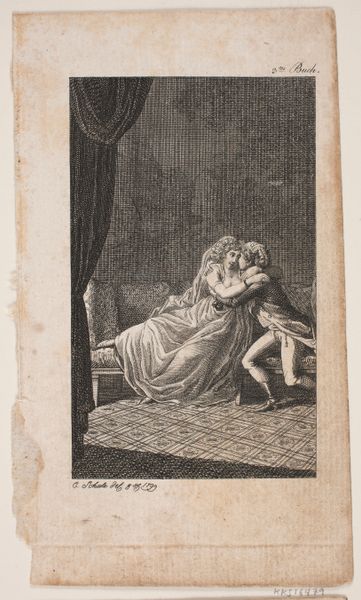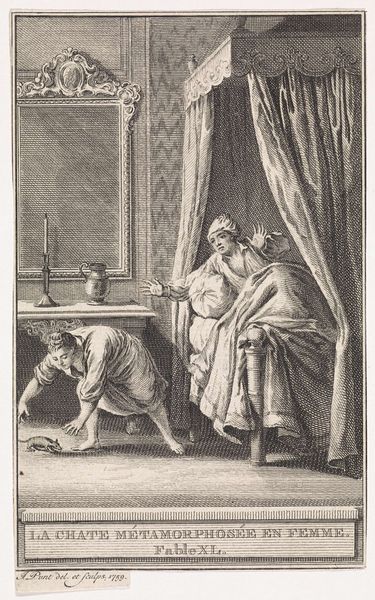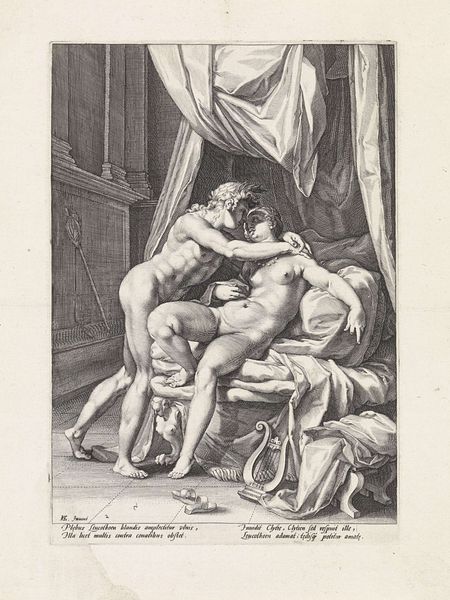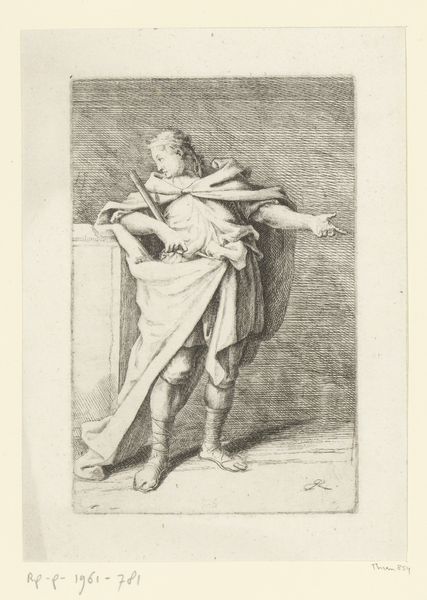
Dimensions: height 142 mm, width 116 mm
Copyright: Rijks Museum: Open Domain
This print, Jozef en de vrouw van Potifar, was made using a technique known as etching. An anonymous artist would have covered a metal plate with a waxy ground, then scratched an image into it with a needle. The plate was then submerged in acid, which bit into the exposed metal, creating recessed lines. These grooves hold ink, which is then transferred to paper under high pressure. What's interesting here is the relationship between the artist’s hand and the mechanical aspects of the process. Unlike drawing directly on paper, etching requires an indirect approach, demanding planning and expertise. The final print also reflects the labor involved in its creation. From preparing the plate to the final printing, each step requires skill and time. The fine lines and delicate shading demonstrate a mastery of the technique, which has a social history of its own. It developed with the rise of print culture, allowing images to be reproduced and widely distributed, thereby democratizing art. It's a fascinating example of how the processes of making are tied to wider issues of labor, politics, and consumption.
Comments
No comments
Be the first to comment and join the conversation on the ultimate creative platform.
